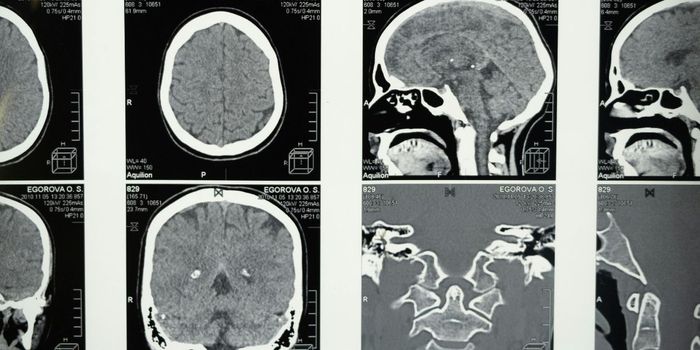In a
large drug screening trial, scientists identified a unique drug combination that is effective against the most aggressive form of medulloblastoma, a deadly type of childhood brain cancer. The drug duo includes two antagonists that work together to inhibit common growth pathways for cancer, offering a new drug therapy for medulloblastoma patients.
Medulloblastoma is of the most common and deadly form of pediatric brain cancer. The malignant tumor cells rapidly grow out of control at the base of the brain, near the cerebellum. There, they aggressively metastasize through the cerebral spinal fluid to other locations on the brain and spine cord. Among the four types of medulloblastomas, patients with tumors driven by the MYC oncogene have the worst prognosis.
"Our goal was to identify drugs with minimal toxicity that we can move quickly from the laboratory to the clinic, where new therapeutic options are desperately needed," said Robert Wechsler-Reya, director of the Tumor Initiation and Maintenance Program at the Sanford Burnham Prebys Medical Discovery Institute (SBP) and senior study author. "Using high-throughput drug screening, we identified a compound that cooperates with a second drug to inhibit tumor growth in vitro and in vivo."
The two compounds are histone deacetylase inhibitors (HDACIs) and phosphatidylinositol 3-kinase inhibitors (PI3KIs). HDACIs work at the epigenetic level to reverse the transcriptional silencing of some genes. In the case of MYC-driven medulloblastoma, researchers found that HDACIs induced expression of a tumor suppressor gene known as FOXO1. Higher expression of FOXO1 stunted the survival of medulloblastoma cells, leading to their demise.
The phosphatidylinositol 3-kinase (PI3K) pathway is notorious in cancer because it is involved in cell growth, proliferation, and survival. Inhibitors of this pathway (PI3KIs) work by stopping the growth process in cancer. When given in conjunction with HDACIs, researchers found that the duo act in synergy to stop tumor cells from growing. This was confirmed in a mouse model of MYC-driven medulloblastoma.
"This study highlights the value of high-throughput drug screening to identify therapies that are effective for specific types of disease," said Wechsler-Reya. "It also demonstrates how combinations of drugs can be much more effective than single agents.”
Importantly, the drugs seem to work without harming normal cells, alleviating a common concern in cancer therapies. “Indeed, the combination therapy significantly improved survival of mice with human MYC tumors compared to each drug on its own," said Kun-Wei Liu, co-lead study author.
"In general, clinical trials for medulloblastoma are challenging because of the limited number of patients. Moreover, given the variability of the disease, most therapies will only work on a subset of patients. Figuring out which patients will respond to which therapies is a major goal of research in the field. If we can tailor therapies based on the genetic makeup of the tumor, a strategy commonly referred to as personalized medicine, this could have an enormous impact on patients with this disease," said Wechsler-Reya.
Additional source:
SBP press release









